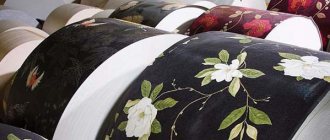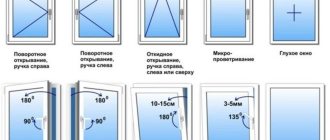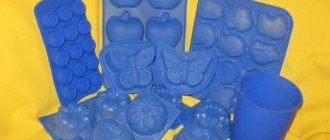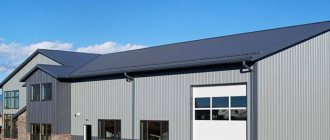Equipment for the production of double-glazed windows Warm Edge
Plastic window production technology
The introduction of modern, precise and high-tech equipment for the production of double-glazed windows is one of the conditions for the rapid development and competitiveness of a PVC window production enterprise. The production of double-glazed windows is a rather complex market segment. On the one hand, the demand for products is very high, on the other hand, there are a large number of competitors. In this regard, people engaged in such business are constantly looking for development strategies and marketing moves to ensure a stable position in the market.
The third stage of manufacturing a double-glazed window is applying sealant
After washing the glass, a primary layer of sealant is applied to the spacer blanks. The spacer frames are connected to each other using corners made of metal or plastic, and a special coating of sealant is applied to their transverse sides in a layer of several mm (minimum 3 mm). Butyls are currently used as sealants. There are certain standards, if violated, premature failure of the double-glazed window occurs or its characteristics do not correspond to the declared ones. The sealed layer must be strictly uniform, have no empty spaces and a width of at least 3 mm. If the production of double-glazed windows has limited dimensions, manual application of sealant is allowed (as in the case of repairing a double-glazed window, which may be caused by violations in the technology during its production).
Machines for the production of double-glazed windows are presented in two modifications: CLL-1600 and CLL-1800
The double-glazed window production line includes efficient modern equipment that allows for a continuous production process according to a technological algorithm. The equipment is intended for the production of double-glazed windows using the American “Warm Edge” technology, using spacer-sealing tape. The complex consists of: a CLL washing and drying unit that cleans glass from dirt and moisture; table CLLJT, designed for assembling the package and allowing processing on an air cushion; table CLLFZ for assembling double-glazed windows, allowing you to rotate the double-glazed window at any angle thanks to a hydraulic press. Crimping of double-glazed windows on the line is carried out using a CLLR in-line press. Glass supply is ensured using a special platform. Easy to operate and maintain. And the price is significantly lower than analogues. Equipment for the production of double-glazed windows:
In our equipment for the production of double-glazed windows, many parts are made from European components, namely electrics and pneumatics. The mechanical components in contact with water in the glass washing and drying unit are made entirely of stainless steel. The production line for double-glazed windows is as simple and unpretentious as possible in operation and maintenance. Provides productivity from 300 to 1300 sq. m of double-glazed windows per shift. Occupies small production areas from 100 sq. m. Does not require highly qualified workers. Does not pollute the premises or the environment. Allows the production of double-glazed windows up to 2200 mm wide. To produce double-glazed windows, you need a minimum of components and workers (only 3-4 people). The warranty for this equipment for the production of double-glazed windows is 1 year, and post-warranty service is also provided at the request of the client.
Double-glazed window production technology
The technology for producing double-glazed windows involves several successive stages, each of which is performed on special equipment.
Cutting the canvas
The sheet glass is placed on a specially equipped cutting table. After carrying out the entire complex of preparatory work, the workpiece is cut into parts of the required size. This technological operation can be carried out manually with a carbide cutter or automatically. In the latter case, high precision of manufactured parts and excellent labor productivity are ensured.
Washing
The cut blanks are placed on a special inclined plane. They are cleaned by spraying water or a special chemical composition. After washing, stains remain on the glass, which can be removed with a piece of soft cloth. Usually cotton or suede is used. You can dry the surface using a stream of warm air.
To facilitate this operation, professional equipment is used. The washing machine is capable of not only cleaning the fabric, but also drying it with air.
This stage of work must be carefully monitored. The presence of even a small amount of moisture on the workpieces leads to insufficient sealing of the glass unit. Therefore, it is recommended that window glass undergo several drying stages.
Preparing the spacer
In double-glazed windows, a spacer frame is installed between the two panes. Before installation, it goes through a preparatory stage, which includes cleaning from contamination, anti-corrosion treatment and drying. All these processes most often occur in parallel with sheet parts in a special machine.
After this, the spacer frame is cut into pieces of the required length. The individual elements are connected to each other using corners and filled with absorbent. When using the "warm edge" technology, the frame is formed from a flexible material. This eliminates the presence of connections that act as “cold bridges” in the glass unit structure.
Internal sealing of glass unit
To ensure a tight fit of the spacer frame to the glass, it is treated with butyl on both sides. A special butyl sealing tape can be secured.
Formation of double-glazed windows
After installing all the sheets, the structure is sent for gluing, which is carried out on a special press.
Hot dimensional pressing machine for double glazed windows
It can be either manual or pneumatic with roller feed.
Final stage of production
The finished structure is filled from the inside with special gas - carbon dioxide, argon, special mixtures. For complete sealing, all joints are treated with silicone or polyurethane-based sealant. After this, the finished products are packaged and delivered to the final consumer.
Glass washing and drying machine CLLQ-1600/CLLQ-1800
| Model | CLLQ-1600 | CLLQ-1800 |
| Glass width maximum (minimum), mm | ≤1600/450 | ≤1800/450 |
| Glass thickness, mm | ≤15 | ≤15 |
| Brushes/wringing shafts pcs. | 4 / 4 | 4 / 4 |
| Diameter, mm | 126 | 126 |
| Suction roller, pcs. | 3 | 3 |
| Suction roller diameter, mm | 80 | 80 |
| Engine power, kW | 0,75 | 0,75 |
| Heater power, kW | 4,5 | 4,5 |
| Pump power, kW | 0,36 | 0,36 |
| Brush rotation, rpm | 850-900 | 850-900 |
| Brush ratio | 0,77 | 0,77 |
| Water heater power, kW | 6 | 6 |
| Fan power, kW | 0,75 | 0,75 |
| Total power, kW | 12 | 12 |
| Glass transfer speed, m/min | 3,5 | 3,5 |
| Power supply | 380V, 50Hz (3-phase) | 380V, 50Hz (3-phase) |
| Weight | ≈ 0.8 tons | ≈ 0.85 tons |
| Ground resistance | 4Ω | 4Ω |
| Dimensions, mm | 2040*2100*1100 | 2300*2200*1100 |
The glass washing machine is used for efficient horizontal washing and drying of glass and is used at the preparatory stage of insulating glass production to ensure the cleanliness of the glass surface. The frame for fastening the glass is located horizontally. Sequential feeding, washing, drying and removal of glass is performed automatically. The processing speed is smooth. The equipment is reliable and easy to set up.
Water supply is implemented in a closed cycle. Water is supplied from a tank built into the unit. The first supply circuit is brushes, the second is washing the glass after the brushes. After the washing process, water collides with the surface of the glass by two pairs of squeezing rollers made of dense porous material. This device allows you to use harder water without compromising the quality of glass cleaning. No detergents are used. The water must be changed every two days or when the slightest stains form on the glass. Once a month you need to wash the squeezing rollers.
- The machine is equipped with a high-quality smoothness control device; the processing speed is adjusted by the operator, which ensures high quality washing.
- When washing glass, water from two tanks is used. This ensures a high degree of glass cleaning.
- The machine uses a two-stage water circulation system that separates clean and cloudy water, which saves water consumption.
- All parts of the glass cleaning and installation system (including the warm air supply pipe, temperature sensors, pipes, tanks, etc.) are made of high-quality stainless steel. The anti-corrosion coating prevents clogging of the water circulation system and the formation of rust.
- Four brushes, which are pressed tightly against the glass surface during processing, provide high quality cleaning.
- The machine is equipped with three absorbent rollers made of high-quality polymer, which ensures their excellent absorbency and long service life.
- The machine is equipped with a roller made of special rubber, which has high wear resistance, long service life and good processing quality.
- The tanks are designed in such a way that they are easy to fill with water.
What is a double-glazed window and what types are there?
A double-glazed window, in short, is two or more sheets of glass, hermetically sealed together at a distance. The space formed between the sheets of glass, the air chamber, serves as a heat insulator.
Single-chamber double-glazed window - made of two glasses
The simplest type among double-glazed windows is single-chamber. Single by the number of cameras and double by the number of glasses. Designated according to GOST - SPO (single-chamber double-glazed window). Due to the presence of two glasses, it allows achieving better heat insulation and noise protection properties compared to single glass.
Double-glazed window - made of three glasses
To improve sound insulation and heat protection, you can use double-glazed windows. Designated according to GOST - SPD (double-chamber double-glazed window). Additional third glass improves noise protection. An additional chamber, the second, reduces heat transfer.
Three-chamber double-glazed window - four glasses
You can further improve thermal insulation and noise protection by adding another sheet of glass to the glass unit. Triple chamber glass unit - and 4 glasses, is far from the limit, but new technologies have appeared that put an end to the race. Laminated glass production technology improves sound insulation better. Low-emissivity glass in energy-saving double-glazed windows provides better protection against temperature changes. The need to increase the number of glasses in a double-glazed unit has disappeared. Three-chamber double-glazed windows are not specified in GOST 24866 “Glued double-glazed windows”.
Stand for applying sealing tape to glass CLLJT-1815
| Model | CLLJT-1815 |
| Nutrition | 380V 50Hz |
| Air pressure, MPa | 0,4 |
| Air consumption, l/min | 20 |
| Vertical stroke of the suction cup, mm | 50 |
| Weight, kg | 200 |
| Dimensions, mm | 1350x2010x750 |
The stand is used when assembling double-glazed windows. Glass is placed on it and spacer tape is applied. An air cushion is used to move the glass. The spacer is applied to fixed glass using an automatic vacuum suction cup. The stand is equipped with an energy-saving, quiet fan that provides high air pressure. The glass heating system uses hot air, which meets environmental requirements. The operator can control the temperature of the glass during processing. The suction cup device allows you to easily move the glass across the surface. The rotating system facilitates the entire processing process, including the installation of the spacer tape.
Sealing of glass unit.
There are two stages of sealing: primary and secondary. During primary sealing, extruders are used to apply butyl to the side surfaces of the spacer frame by heating it. They differ in hopper volume, operating temperature, butyl supply speed.
Also, additional equipment will require tables for sealing with rotation. Basically, two types of tables are used - with a manual or pneumatic drive. Both use a vacuum fastening system for glass units.
It is also possible to use a manual pneumatic press to use non-standard double-glazed windows.
The second stage of sealing is the final sealing of the glass unit. This process uses two equipment options using a single-component hot-melt sealant, as well as the use of extruders for sealing with two-component sealants. Both methods are common; the difference between these methods is the use of different materials for sealing. 2-Component Sealant Extruder - A powerful hydraulic extruder for handling all types of 2-component sealants used.
Hot-melt extruder.
Table for combining glass CLLFZ-1712
| Model | CLLFZ-1712 |
| Air pressure, MPa | 0,4-0,6 |
| Maximum piston stroke, mm | 500 |
| Maximum lift angle | 80° |
| Working frame size, mm | 2010X1400 |
| Dimensions, mm | 2210x1500x810 |
| Power consumption, kW | 1.5 |
| Weight, kg | 100 |
The table is mainly used for combining glass with a spacer applied and just glass. Particularly convenient for the production of single-chamber and double-chamber double-glazed windows. The welded parts of the table are durable and resistant to corrosion. The table consists of a stand, a working frame and a rotating mechanism. The table is designed simply and conveniently.
Hot pressing machine for double-glazed windows CLLR-1600/CLLR-1800
| Model | CLLR-1600 | CLLR-1800 |
| Glass width maximum (minimum), mm | ≤1600/400 | ≤1800/400 |
| Glazing thickness, mm | ≥14 ≤50 | ≥14 ≤50 |
| Infrared lamp, pcs. | 18 | 18 |
| Press rollers | 4 pairs with diameter 90 | 4 pairs with diameter 90 |
| Drive motor power, KW | 0,37 | 0,37 |
| Heating compartment power, KW | 18 | 22 |
| Total power, KW | 18,37 | 22,37 |
| Control temperature range, °C | 0-300 | 0-300 |
| Drive motor speed | 3.3-16 revolutions/min. 1.10~1.40m/min | 3.3-16 revolutions/min. 1.10~1.40m/min |
| Variable Rate Ratio | 1:05:00 | 1:05:00 |
| Power supply | 380V 50HZ three-phase 4-wire system | 380V 50HZ three-phase 4-wire system |
| Weight | ≈0.76T | ≈0.8T |
| Ground resistance | 4Ω | 4Ω |
| Dimensions(L * W * H) | 2070*2110*1170 | 2300*2200*1200 |
The machine is designed for pressing double-glazed windows with spacer-sealing tape. A flexible spacer is placed between the two glasses, the glasses are heated and pressed, resulting in a dry vacuum space between the glasses, while the thickness and size of the processed material meets all glass unit standards.
- The machine is equipped with infrared lamps. Due to them, the glass unit is heated.
- The lamps are highly efficient and have a long service life.
- The mechanism for smoothly adjusting the rolling speed of the glass unit guarantees the required quality.
- Measuring systems allow you to select the pressing force required for processing a glass unit.
- The thermostat is made of high-temperature-resistant material to prevent unnecessary heat consumption.
- Four pairs of rubber rollers of varying hardness ensure uniform distribution of pressure on the glass and uniform thickness of the finished glass unit.
- The high quality of all the most important parts ensures the stability and reliability of the machine.
- Temperature control device with digital display simplifies the operator's work.
- The machine shelf is made of high quality carbon steel, which prevents corrosion and rusting of the surface.










